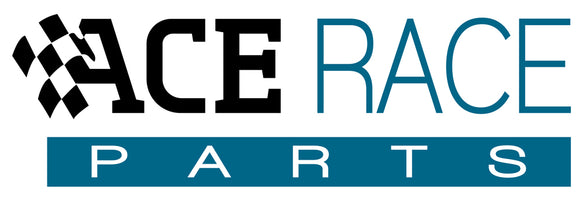
What is the Centerline Radius (CLR) of a Bend?
We are frequently asked for clarification of the meaning of Centerline Radius, often referenced as CLR. The CLR of a bend is the distance from center of the bending die to the axis (centerline) of the tube or pipe.

When fabricating a set of headers, a downpipe, or an exhaust one very critical dimension to pay attention to is the Centerline Radius of the bend. If the CLR of the bend is too "tight" or too "loose" for the application the end result might mean that the fabricated item may not fit the application properly, or it may mean that the inlet or outlet of the fabricated item will be way out of alignment. Oftentimes, a set of headers may require a mix of both standard and tight radius bends, or a custom downpipe might require the tightest bend radius possible to clear an existing part of the vehicle. Knowing how to measure centerline radius is an important part of sourcing the correct fabrication components that the specific job requires.
WHAT DOES "1.5D CLR" REFER TO?
The "D" multiplier figure, or in this case 1.5D, is referring to a bend that has a centerline radius that is "1.5 times the outside diameter" of the material. For example, a 3" OD 90° bend with a 1.5D CLR will have a centerline radius of 4.5" (3 * 1.5 = 4.5). Note, when it comes to pipe size material, which uses nominal sizing, the formula uses the nominal dimension not the exact OD of the material.
A quick point to remember when dealing with the numbers associated with CLR dimensions: the larger the number that precedes the "D" the more gradual the bend radius will be. For example, a 1D CLR bend will have a tighter bend radius when compared to a 1.2D CLR bend, a 1.2D CLR bend will have a tighter bend radius when compared to a 1.5D CLR bend, and so on. The following images of some of our real products helps illustrate the various bend radius options available.

From the above image, working left to right, the items show are the following SKUs: 21019, 21019-B, and 21019-C. You may notice that on our website and catalog we typically refer to the centerline radius with inch dimensions, rather than the "D" multiplier figure. If you prefer using the "D" multiplier figure rather than inch measurements, quickly obtain the "D" multiplier figure by simply dividing the CLR by the outside diameter of the material: 4.5 / 3 = 1.5

From the above image, working left to right, the items show are the following SKUs: 21066 and 21066-1
In the automotive, sanitary, industrial and other industries where a bend radius is referenced, "Standard" or "Long" radius bends typically have a 1.5D CLR. For nominal pipe size material, where the majority of all elbows do not have tangents or "legs", the CLR is often referred to as the "Center to Face" dimension. With 1.5D being the "Standard" CLR, anything tighter than 1.5D is often referred to as "Tight Radius" in most industries. Conversely, bends or elbows with a radius larger than 1.5D are often referred to as "loose radius" or "sweeping radius" bends.

Comments
Leave a comment